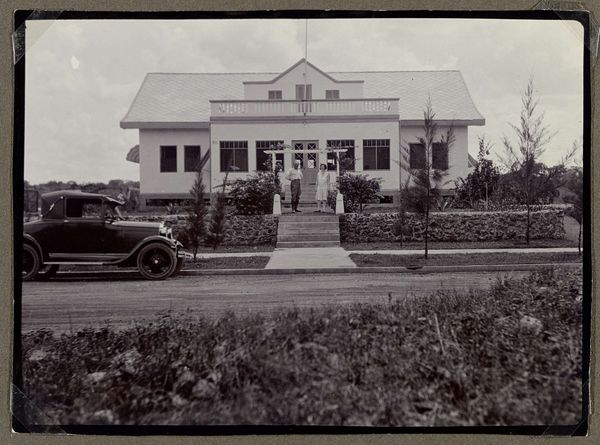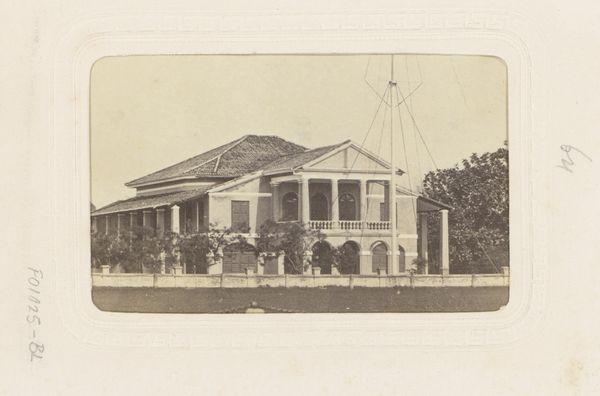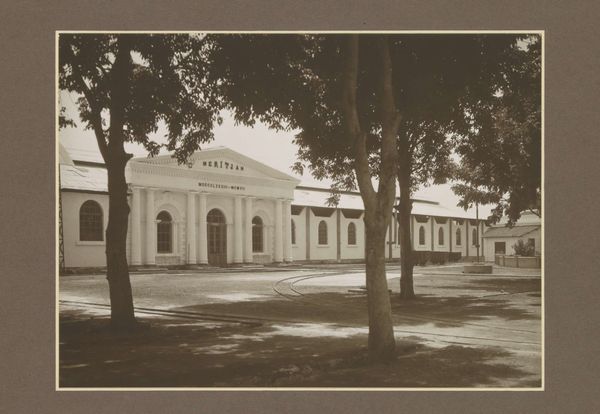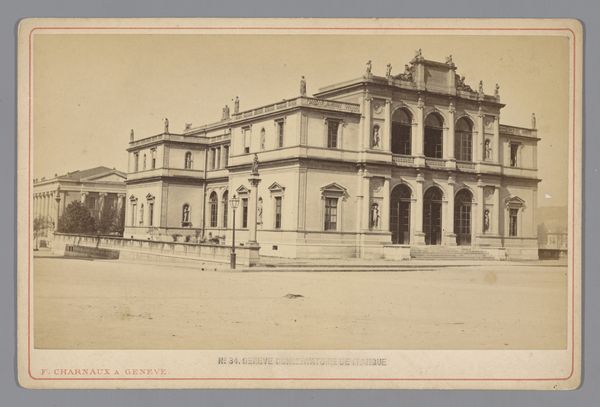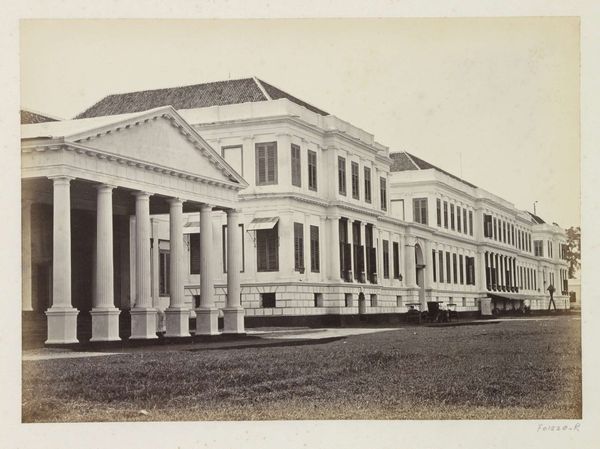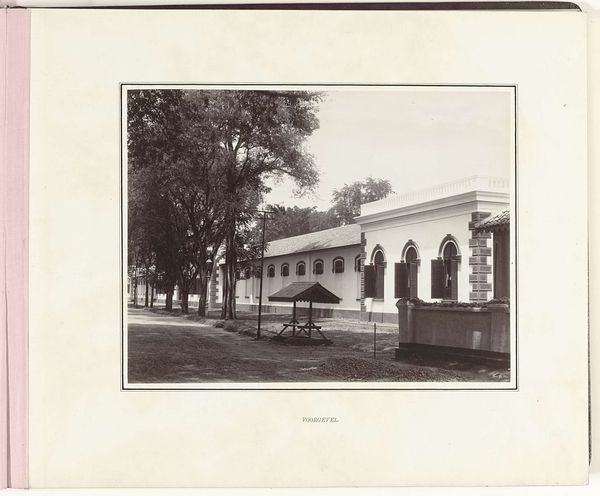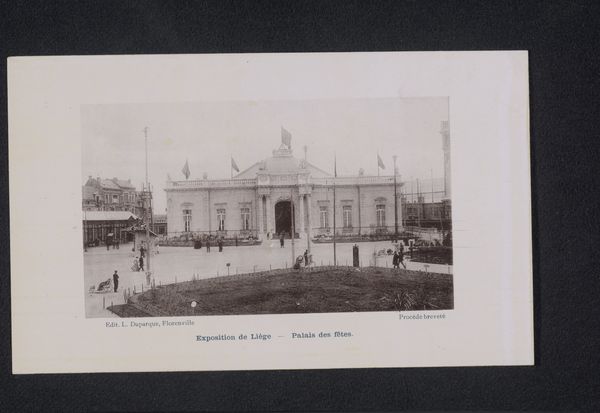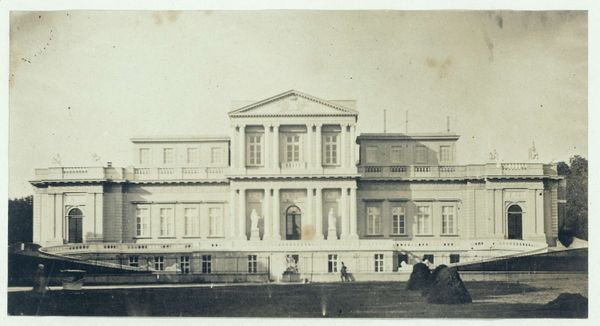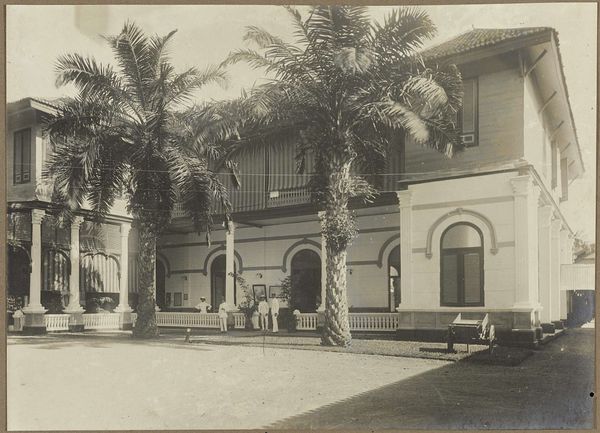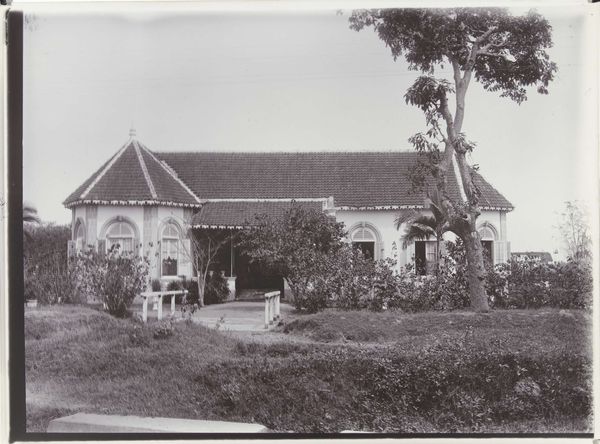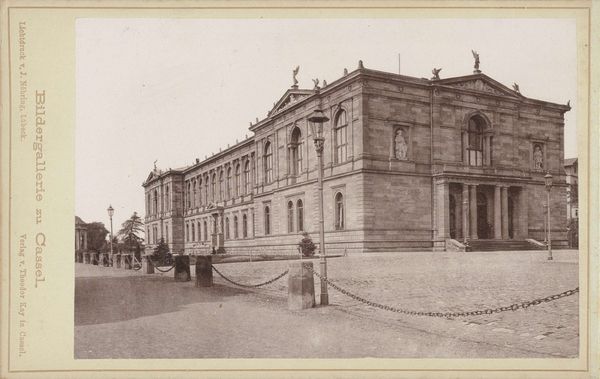
Exterieur van het kantoor van de Deli Maatschappij in Medan c. 1900 - 1920
0:00
0:00
print, photography, site-specific, gelatin-silver-print, architecture
# print
#
landscape
#
photography
#
orientalism
#
site-specific
#
gelatin-silver-print
#
cityscape
#
architecture
Dimensions: height 103 mm, width 150 mm
Copyright: Rijks Museum: Open Domain
Editor: This gelatin silver print, titled "Exterieur van het kantoor van de Deli Maatschappij in Medan," is estimated to be from sometime between 1900 and 1920. I find its formal, almost imposing structure juxtaposed with the tropical setting quite striking. What do you see in this piece? Curator: I see layers of meaning embedded within this seemingly straightforward architectural photograph. The building itself, the office of the Deli Company, immediately speaks to colonial power structures. Notice how the architecture evokes European Neoclassical styles, transported and imposed onto a Sumatran landscape. What do you think that architectural imposition symbolizes? Editor: It feels like a visual assertion of dominance, a way of saying "We are here, and we are in charge," through this imposing structure. It feels… intentional. Curator: Exactly! Consider also the absence of people, save perhaps the implied figures in the horse-drawn carriage. It lends a certain ghostliness, highlighting the power of the institution over the individual and the land. Does this photograph remind you of any other architectural symbols of power? Editor: I suppose it echoes some government buildings I’ve seen back home, though obviously with a different cultural backdrop. I never considered how architecture could be such a potent symbol. Curator: And look at how the stark white of the building contrasts against the surrounding foliage. White is a loaded colour – purity, cleanliness, and, historically, racial superiority. Editor: So the visual elements become like coded language. I will definitely look at buildings in photographs and in real life differently going forward.
Comments
No comments
Be the first to comment and join the conversation on the ultimate creative platform.

